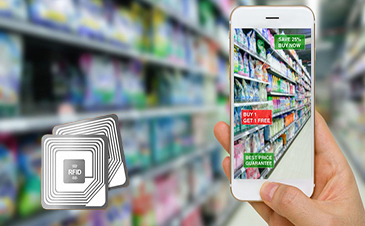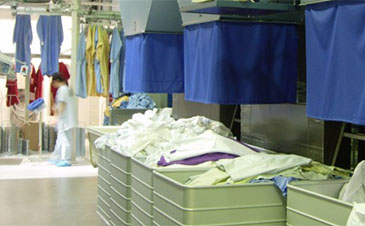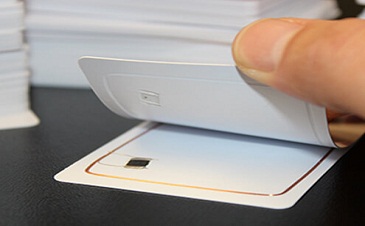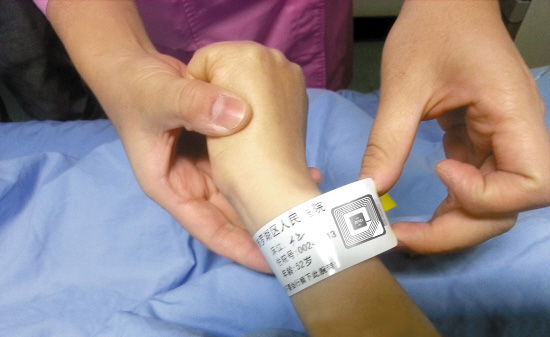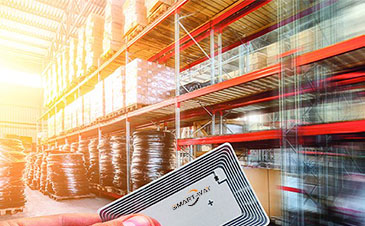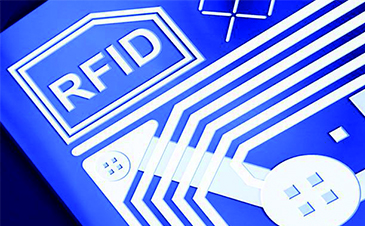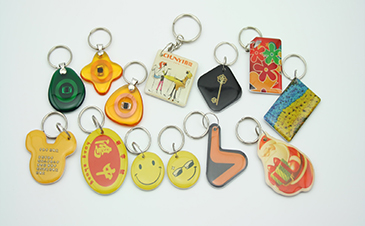Laundry and linens services randomly disappear when you least expect it.
These products are used daily and then you look again and they are gone! This mystery has been solved with new technology that keeps an eye on these as well as giving you other benefits.
Radio frequency identification (RFID) can now provide commercial laundries a way to track these textiles.
“RFID is being used to track all sorts of items including, but not limited to, uniforms, scrubs, flat linen, terry, microfiber product, mats, tuxedos and more starting with the customer back to the plant, then back from the plant to the customer,” says Jeff Markman, president of Positek RFID.
When looking for visibility for inventory, RFID is the answer, he says. Where is the product? How long does it reside all the way through the process? How long does product last before it needs to be removed? Which product has been lost of destroyed?
“Not every company sees the same RFID benefits,” Markman says. “RFID in the linen space have been able to reduce inventory needed to service accounts properly, charge customers by each piece individually versus by weight, ability to charge for loss that exceeds a certain level and improved/increased quality.
Scott Sloan with Innovative Management Designs, who has a RFID software that tracks product, says RFID is not only for keeping track of product and counting inventory.
“Companies are starting to implement additional points to read for production, packaging and distribution/shipping,” he says. “One example is with manufacturing bundles of items. RFID gives you ways to inspect these bundles to assure each item is tagged, everything in the bundle is the same and the bundle count is correct.”
Laundry and linen services industry has been using RFID for some time now, according to Markman. The industry has seen the technology start in the low frequency (LF) at 125Khz to high frequency (HF) at 13.56 Mhz to ultra-high frequency (UHF) in the 900Mhz range.
“When we see frequencies change/enhance, the applications change along with it,” Markman says. “In the LF and HF world, the tags were small, hardened and round. The read ranges were 6 to 18 inches and went from single-read to multi-read applications.
He says the trying to read bulk products effectively and efficiently was very difficult. Then in 2010, UHF came to market.
“This new UHF frequency required a change in the format of tags to a rectangular shape,” says Markman. “UHF tags have read ranges of 10+ feet and read 10 times as fast as the latest HF tags.”
This new frequency allowed for quick scans of bulk items and the opportunity to develop solutions to read bulk items in carts, bags and slings. This allowed for a much improved garment solution, according to Markman.
“This allowed the textile maintenance companies to take inventory at a customer site, scan loads of articles and run their scanning processes of single items and bundles much faster,” he says. “Finally, it was apparent that this technology was ready for products like linen and terry. Some other applications such as reading soil in carts and on conveyors was now possible. Capturing a read when bundles and carts leave was now possible. Inventory at the customer was possible.”
Early on, adding RFID to products was considered an alternate, more modern version of a bar code, Sloan says. But that is just the beginning of what RFID can do. Increase in productivity is caused by a much faster count cycle.
“RFID development takes me back to the Internet browser days where Microsoft and Netscape had many releases that fixed previous issues and pain points while giving the user new features, he says.”
Multi-reader UHF tag accountability in regards to “chain of customer” of a product is easy to get, says Sloan. Laundries are able to track what is in-plant and where, as well as out-of-plant by route, customer, item, and for how long. Efficiencies gained with inventory control, making sure laundry and linen services have the proper linen level in stock, production and out in the field.
“Also, RFID costs have dropped to a point where the customers of laundries are starting to tag items and performing very similar tracking of how a laundry is returning and what was sent,” says Sloan.
RFID Tags come in all sorts of different sizes and shapes for many reasons, but the basics of how a tag is scanned and what information is gathered is effectively the same, according to Sloan.
“Your RFID vendor will assist you with assembling the best solution for your specific requirements,” he says. “The biggest challenge is ensuring your software vendor writes code so that it supports more than just one type of reader of chip.”
In regards to tracking, there is no difference in how the scanning happens. However, there are basic business processes that are different in what a laundry does when the tag is scanned, according to Sloan.
A hotel may wish to track what items are going out the front door, he says. Nice Turkish robes, for instance.
“Another vertical, healthcare, you may also want to track how many times a barrier gown is used before it is required to be removed from circulation or keeping track of where a cubicle curtain has been or washed for MRSA-related issues,” Sloan says.
UHF RFID tags are bit different, according to Markman. Some tags are suitable for use in MRI machines and some are not. Some tags can be reused easily and effectively.
He adds that some tags are sewn on and some tags are heat-sealed. Different classes of articles may require different attachment methods.
“Terry does not take a heat-seal very well. Heat-sealed tags may not survive repeated processing through a flatwork ironer,” he says. “An RFID tag that has been heat-sealed is much harder to reuse. Manufacturers of products now offer RFID-tagged product, minimizing the labor associated with starting up an RFID system.”
There are three things a laundry and linen service needs to get started using RFID, says Sloan. RFID tags, readers, and software that support the technology as well as the businesses that need to be reached.
He cautions, however, that there is much more involved in using RFID: “You just can’t slap tags on items and ‘bang,’ RFID is active,” Sloan says. “You should set a meeting/call with an RFID vendor. They will walk you through the steps to implement an RFID system and improve your operation.”

